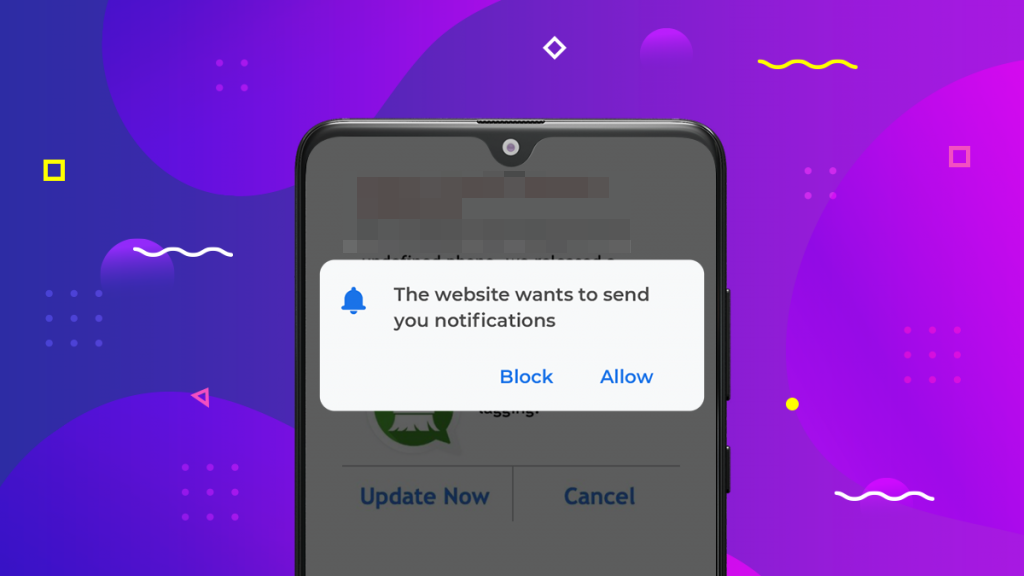Today, we are excited to share one more successful case from our customer — a mobile utility app owner. It was the first time he decided to try ProPush monetization — and it paid off! The best thing about this experience is how a minor setting changed the whole deal: this case study is a great example of how important it is to be attentive to details — and of course stats.
Many app owners working with ProPush use mobile ad networks for the monetization of their apps: the network shows in-app ads to users and pays for views or conversions. However, they often want to have alternative options and increase profits — and this is where ProPush can help.
If you are more into visual content, check the video version of this head-spinning case study:
Case study: basic details
As we already mentioned, our partner is a Utility app owner. So, he performs both as a publisher and advertiser for his app. His app allows ad placement on an in-app ad platform, and he runs advertising campaigns there to promote the Utility via a PropellerAds network. Here are the offer details:
- Offer: Utility App
- GEOs: IN, US, ZA, VN, DE, GB, IT, ID, AR, MY
- Conversion type: Install
- Pricing model (ProPush side): RevShare (СPM)
To promote the app, our partner sends the traffic to a pre-lander that leads to the Google Play and App Store. To boost monetization, he added the ProPush.me Smart Tag to this pre-lander:

The pre-lander looks the same for all GEOs, but adjusts to a user’s browser language.
Smart Tag setting details
You can add a Smart Tag to your landing page or pre-lander and go with the default settings. Our partner did this way at the very beginning, so the user flow looked like this:

After the first testing, our partner noticed a slight CR decrease in his monetization campaign with a mobile ad network — about 2%. Our research shows that if you use Propush as additional monetization, the CR of your main funnel can be slightly impacted (1%-2% drop after you set a push tag) and it’s a norm. Your profit from ProPush will easily cover this slight change in the conversion flow. However, the partner wanted to make the ProPush monetization even more efficient.
Our manager contacted the partner, and together they decided to test an alternative solution: an hour delay before the first push notification.

Our tests at ProPush proved that an hour is an optimal delay for the first push notification, so we tried this option for our partner — and it worked out. The CR almost bounced back, and now the decrease was only 1%. At the same time, profit from push subscriptions kept bringing additional income and fully compensated for this slight decrease.
An important thing to note is that the First Impressions rate will become lower compared to the standard settings when the first push notification appears immediately after subscription. The difference between the First Impressions and Subscriptions is normally 10% or so, but if you set a delay, the stats might look like this:

A tip: to set a delay for the first push notification, contact your ProPush manager or support team.
Another important point: our partner did not use TrafficBack so a user stayed at his offer and downloaded the app.
Ad campaign: sending traffic
Armed with the new settings, a user continued to send traffic to his pre-lander with the ProPush Tag. He opted for our partner ad network PropellerAds, and here is what the campaign looked like:
- Traffic: PopUnder, Interstitial, and Push
- GEO: IN, US, ZA, VN, DE, GB, IT, ID, AR, MY, and more
- Browser: Google Chrome, Samsung Browser, Facebook Browser
- OS: Mobile, Android
- Budget: unlimited
- Period: 30/04 - 12/05
The Popunder traffic works best for both ProPush monetization and the Utilities vertical overall, so the partner stuck to this traffic type, but also added Interstitial ads. As you will see on the screenshots below, he also worked with Push traffic, too — it was not possible for him to exclude it, especially for ProPush.me.
It didn’t affect the campaign flow or give any negative impact on the monetization efforts. At the same time, it didn’t bring the best results for monetization with ProPush, and the other options proved to work much better.
Overall, we don’t recommend to use Push traffic for monetization with ProPush, if possible.
Finally, the most exciting part: stats! This is what our partner got after almost two weeks of sending the traffic from PropellerAds:
Ad network stats:

He didn’t send traffic exclusively to his utility app but decided to get extra monetization from ProPush for all his offers and GEOs. Here are the overall results in ProPush for the top profitable GEOs:

Note an important thing when checking the stats: the CR significantly differs depending on various campaign parameters. They include a traffic type, traffic source, and GEO. If you create a similar campaign, your CR rates might be absolutely different, so it’s very unique.
And here is the profit our partner got only from the utility app in ProPush:

Results
After the campaign was over, we contacted our partner to check if he managed to profit with ProPush. This is what he shared with us:
- The CR remained a bit lower than before ProPush monetization, but not lower than 1%
- The slight changes in CR were fully covered by ProPush revenues
Speaking on the figures, the results were the following:
- The full cost of paid PropellerAds traffic was $46,141.45
- The revenue from ProPush turned out to be $12,416.289
The ProPush revenue made up 27% of the whole traffic price.
Want to reach the same or even better results? Join ProPush.me now — and bring extra monetization to your website without much effort!

